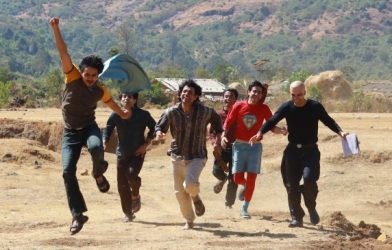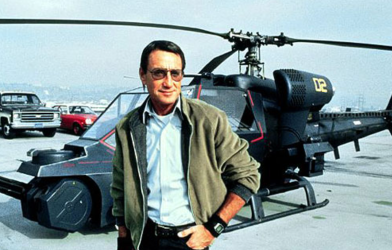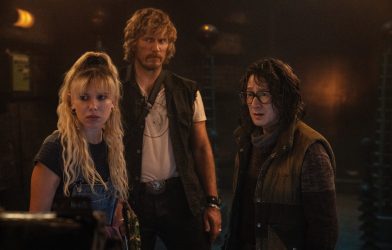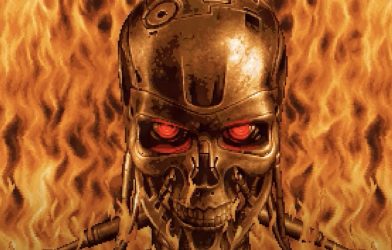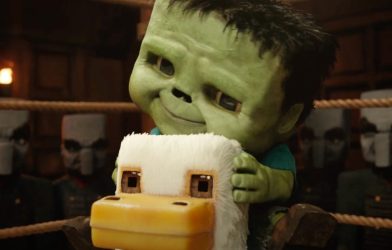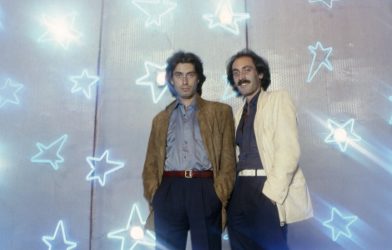Han shot first.
As we celebrate the most hallowed of holidays — May the Fourth, also known as “Star Wars Day” because, you know, “may the Force be with you” — let us all agree that a long time ago, in a galaxy that now feels very far away indeed, Han shot Greedo first. No amount of special editions or George Lucas declarations will change that, even if, uh, Lucas actually did change that scene. If you seek the originals, these aren’t the films you’re looking for.
A rebellion began in 1997, when Lucasfilm first released altered “special editions” of the first trilogy, adding new or revised scenes, computer-generated effects and expanded worlds. Ever since, fans have clamored for high-definition releases of the unaltered movies. Lucas has resisted and has continued altering them, insisting he is fulfilling his vision for the films, which was technologically and financially impossible when they were first made — though he once called altering art “barbaric.”
So if you want to see the original “Star Wars” trilogy — as they were shown in theaters, a bit softer and grainier (and with Han Solo definitely shooting the bounty hunter Greedo first, not in self-defense, as he now does) — you’ll have to rely on some rebel fans like Robert Williams.
Williams, a Philadelphia-based computer programmer, is part of a group of five people called Team Negative One, one of a few “Star Wars” fan groups that, for more than a decade, have collected 35-millimeter prints of the first “Star Wars” movies and laboriously restored them in 4K. Known as Project 4K, the movies are titled by the years they were released: 4K77, 4K80 and 4K83.
“Our goal was to find a way to make it look as good as the official releases,” Williams said.
The restorations are not authorized and come from film reels that were meant to be returned or destroyed after cinemas were done with them. While their legality is in question, fans and preservationists argue the public has a right to view art, including film, in its original form. Lucas, however, has reportedly said to fans: “Grow up. These are my movies, not yours.”
In February, Team Negative One announced the completion of the trilogy project, with a 4K version of “The Empire Strikes Back.”
Many of Lucas’s edits of the original movies were cosmetic changes. An extended shot here. A beep there. More computer-generated background figures, some replacing models or puppets, and color changes.
But some changes shifted character arcs, such as the famous scene in the original “Star Wars” with Greedo and Han Solo, played by Harrison Ford, at the Mos Eisley Cantina. In that 1977 release — later retitled “A New Hope” — the outlaw Han shoots and kills the bounty hunter, without much provocation, setting up a redemptive arc.
Since the 1997 edition, Han fires in self-defense, an edit that drew scorn from some fans, who took up “Han shot first” as a battle cry (featured on unofficial merchandise) and boycotted DVD releases. Even “South Park” pilloried Lucas over the edits.
Lucas, in 1997, said the new special editions would be the definitive versions. “The other versions will disappear,” he said. “Even the 35 million tapes of ‘Star Wars’ out there won’t last more than 30 or 40 years. A hundred years from now, the only version of the movie that anyone will remember will be the DVD version.”
Williams, 49, met his fellow restorers on the message boards of a site called Original Trilogy. Williams, who grew up in Britain, first saw “Star Wars” in theaters in 1977 and in the 1980s fell in love with the films by watching them on television every Christmas.
Team Negative One wasn’t the first to attempt such an ambitious project. One, known as the “Star Wars Despecialized Edition,” led by Petr Harmy, reassembled the movies from DVDs, VHS tapes and laser discs. Harmy’s and Williams’s groups have collaborated.
Restoration begins with finding the original film reels and digitizing them. Williams said that over the years, his group’s sources for the reels had included eBay and collectors who had them in storage. The films are then run through an old-school projector. Once the film is scanned, the team goes through it frame by frame, cleaning and upgrading it.
The first restoration was done in 2016 with “A New Hope.” Over the next year, the group came across an almost pristine reel of “Return of the Jedi,” the third film in the trilogy. It was completed in 2017 — without Darth Vader yelling “Nooooo!” as he kills the emperor.
“The Empire Strikes Back,” however, took seven years, because the group had to restore a damaged print of the film.
Lucas, in an interview with The Associated Press in 2004, said that the altered versions of the films were what mattered to him.
“It’s like this is the movie I wanted it to be, and I’m sorry you saw half a completed film and fell in love with it,” Lucas said at the time. “But I want it to be the way I want it to be.”
In 2012, Disney purchased the rights to the “Star Wars” franchise along with Lucasfilm. Williams said he had never heard from either Lucasfilm or Disney about the unauthorized theatrical editions. Representatives for Disney did not reply to a request for comment.
In the meantime, new film reels have been found, meaning the work on the trilogy continues. Williams’s group is also working on a 1977 documentary, “The Making of Star Wars,” the 1997 “special editions,” because they were also altered, as well as the prequel trilogy, to preserve how they looked on film before being digitized. Team Negative One’s works aren’t posted in full on platforms like YouTube but are downloadable on forums like Original Trilogy and on archive.org.
The fans who restored the films aren’t rejecting Lucas’s creative vision, Williams said.
“They’re not really upset that he made the changes, because some of them are pretty cool and actually make the films better,” Williams said. “They’re really upset that he didn’t also release the original version alongside it. Just put two discs in the box. We’d have been happy.”




